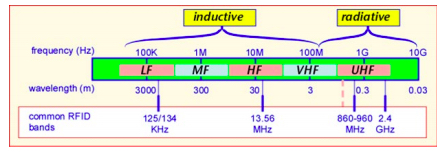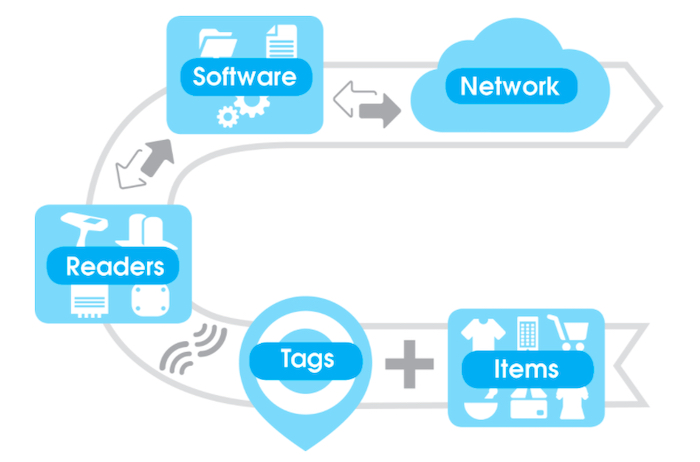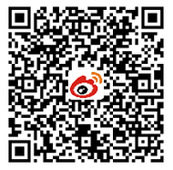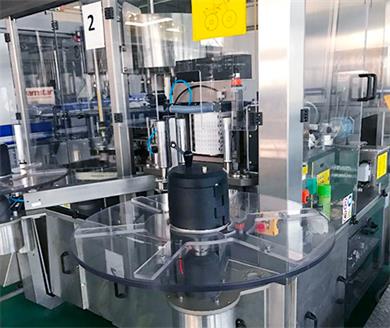RAIN Alliance Extends Its Reach for Universal UHF RFID Adoption
Like Bluetooth SIG and the Wi-Fi Alliance, the RAIN Alliance is pushing for global adoption of ultra-high frequency (UHF) RFID technology.
Akin to Bluetooth SIG and the Wi-Fi Alliance, the RAIN Alliance is a global collective supporting widespread adoption of ultra-high frequency (UHF) RFID technology. RAIN’s mission is to promote standardized UHF protocols and simplifying the RFID landscape.
RAIN claims its RFID technology “connects billions of everyday items to the internet” while benefiting businesses and consumers. Powercast is the most recent RF company to join the RAIN Alliance's 160 members, contributing its wireless technologies like the Powerharvester RF-to-DC converter chips.
In this article, we’ll assess the technology powering RAID and UHF—which is ubiquitous within our homes and workplaces.
RAIN’s technology includes integrations between readers and networks—a connection bridged by software. RAIN derived its namesake from radio frequency identification, hinting at the relationship between UHF and cloud systems.
The RAIN Alliance openly acknowledges the high quantity of data generated by these RFID interactions, which must be stored and managed by the governing party. These background operations rapidly occur when an employee scans their on-site access badge, for example. RFID data may also be shared over the internet where applicable.

This technology is useful for tracking massive groupings of objects or perhaps individuals by proxy. RFID tags can find a strong footing in the shipping and logistics fields where accounting for hundreds or thousands of items is critical.
Engineers can also embed corresponding readers within objects or choose to install them in a fixed position if portable designs aren’t the ticket. RAIN readers are both long- and short-range with varied antenna sizes.
First and foremost, RFID is a technology allowing readers and tags to communicate. Information is sent back and forth along these radiofrequency channels. According to the RAIN Alliance, the UHF variety of RFID is coveted thanks to its longer reader range of roughly 50 feet—fit for a variety of applications. The ultra-high frequency band itself ranges from 300 MHz to 1 GHz; tags and readers operate at varied frequencies within this range.

These systems operate using backscattering or radiative coupling. Each method requires the emittance of electromagnetic signals. Backscattering energizes the tag via its RF transmitter. The reader transmits a signal, which is then reflected back from the tag and interpreted. This allows for simple data transfers. We call this coupling because two devices are directly interacting.
Radiative processes vary by wavelength, and longer wavelengths require larger antennas. The transmitters in card readers are thus small since cards are held against the reader—minimizing signal distances.

We also know that UHF carries an energetic yet localized signal. Range is a weakness compared to other long-wave technologies. This doesn’t necessarily hamper its usefulness. It simply means electrical engineers must choose suitable hardware components for a given task.
RAIN’s biggest draw is its ability to streamline many of the RFID processes we already use worldwide. The collective effort aims to empower other companies to create innovative RAID-based solutions.
One of the biggest challenges within the electronics realm is fragmentation—different methods for achieving functionality, different hardware requirements, and proprietary technologies that don’t integrate with others.
RAIN wants businesses and customers to largely be on the same page. This is a key step to creating a better-connected society.
- Impinj unlocks new IoT device opportunities with launch advanced RAIN RFID chips
- RFID is Improving the World of Healthcare
- Confidex Ferrowave Micro Delivers On-Metal RFID Tracking for Specialty Retail
- Paragon ID announces the acquisition of Security Label, European leader and one of the world's bigge















